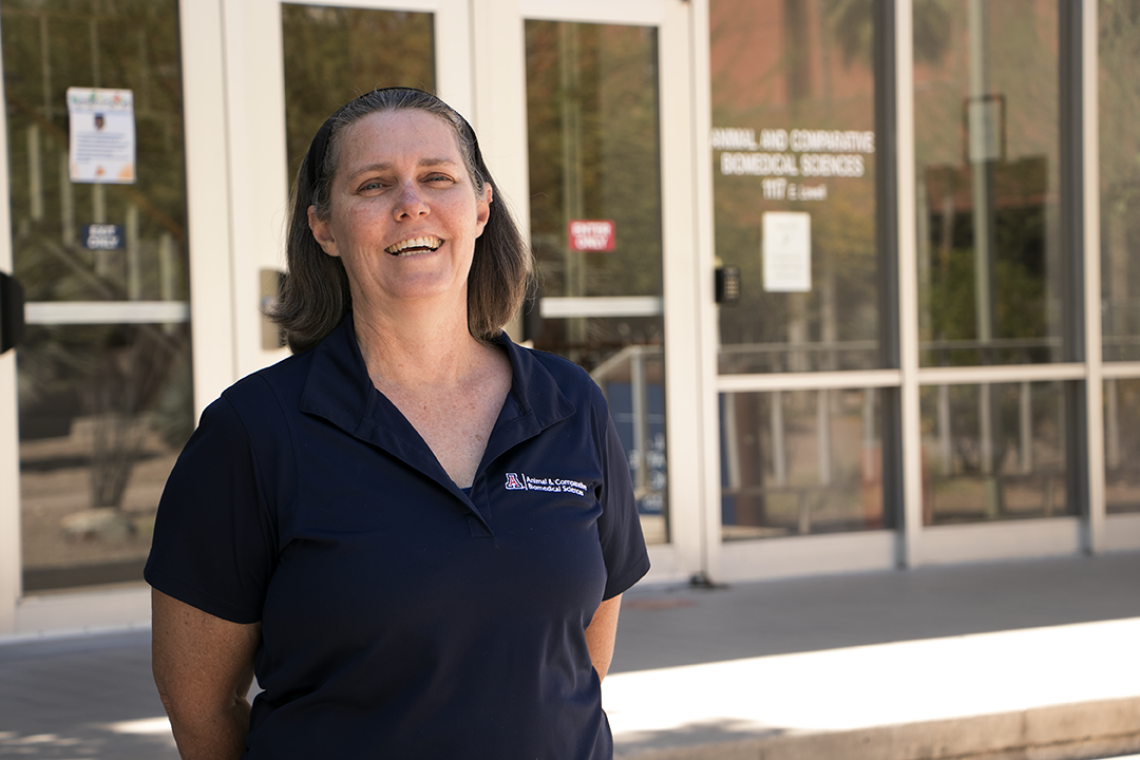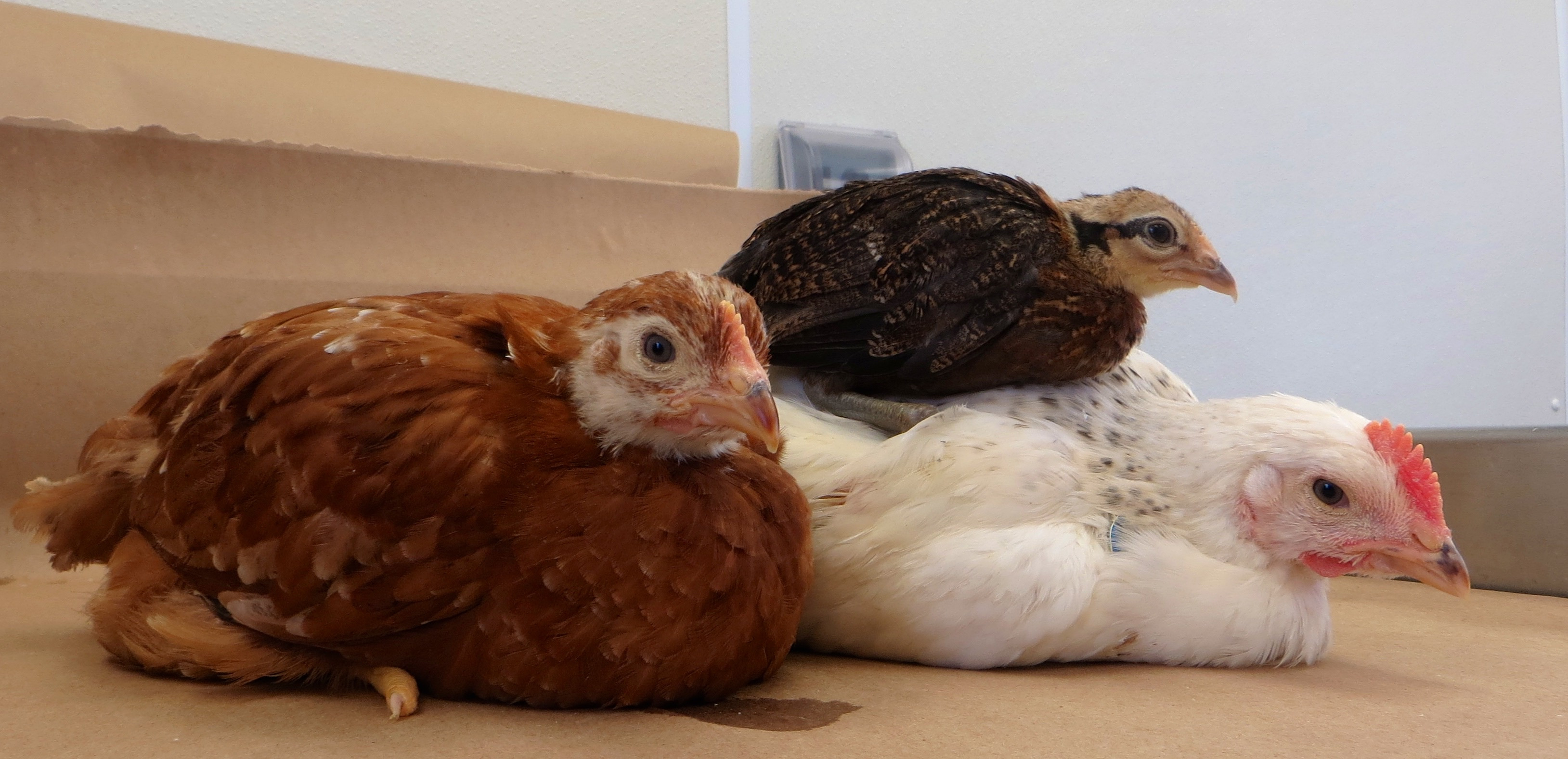A gene by any other name: Biocuration efforts help biologists speak the same language
Biocurators in the School of Animal and Comparative Biomedical Sciences provide standardized names for bird genes as part of a multistate program funded by the US Department of Agriculture (USDA).

Fiona McCarthy, Professor in the School of Animal and Comparative Biomedical Sciences.
Rosemary Brandt
Imagine you’re a biologist looking for all the scientific information published about one specific gene. Chances are, you’d do a series of database searches using the gene’s name. But what if the gene you’re interested in isn’t the only one with that name? What if the gene you’re interested in has multiple names? How can you be sure that you’re getting complete, accurate information?
Enter the biocurators.
“We’re the library scientists of the biology world,” explained Fiona McCarthy, a professor in the School of Animal and Comparative Biomedical Sciences (ACBS). “We are the people who are organizing biological data in the databases so that biologists can come in and get the information they need.”
Like librarians and museum curators, biocurators manage collections, ensuring that they’re comprehensive, organized and easy to use. Their collections deal with biological data like gene or protein sequences, some of which may be newly discovered, some of which may have been given several different names, and some of which may share a name with a completely different gene. The job of the biocurator involves standardizing and annotating these data so that other biologists can understand them.
“It’s really important that biologists are able to speak the same language,” McCarthy said. “Now that we can sequence genes relatively easily, we’re discovering so much biological data that needs to be sifted through and organized. That’s what we do - I like to think of it as changing data into information.”
Chickens and eggs – expanding genetic databases to include bird genes

Most international biocuration efforts have focused on genes found in humans and other mammals, but lately there’s been a push for standardizing gene names for all vertebrate species, including birds and reptiles.
ACBS researchers are on the front lines of these efforts. They’ve been tasked with standardizing names for chicken genes as part of a multistate program funded by the US Department of Agriculture (USDA).
According to McCarthy, the challenge ACBS biocurators face is that while many of the genes that have been identified in the human genome have functions that translate easily to other mammals, they don't translate easily to birds. Since gene names are generally based on what scientists believe a gene does, this presents a real problem.
"For instance, let's say you have a mammal gene named for its role in placentas," she said. "But then you find that birds also have a copy of this gene. Birds don't have placentas, so maybe that gene doesn't really do what we thought it did. We've got to go back and reorganize our cataloging system to make it much more inclusive."
The USDA has chosen to use chicken genes as a model for other bird species because of the close relationship between chickens and humans.
“Chickens and other poultry are an important protein source in the human diet,” McCarthy said. “Understanding their genetics will help us improve poultry health and productivity. Chickens are also used as a biomedical model to study immunology and developmental biology.”
Supported by students
According to McCarthy, much of the chicken biocuration work at UArizona is supported by ACBS undergraduate students.
“It makes for a great undergraduate research project because it allows the students to bring in all these pieces from different classes and see how it all comes together,” she said. “They’re getting to apply some genetics, some evolutionary history, some immunology, and combine them to answer the questions we’re dealing with.”
Armed with laptops, an internet connection and access to biological databases, students dive into data sets to investigate whether a given gene has ever appeared in published papers, and if so, under what name. Things really get exciting when McCarthy and her team encounter unfamiliar gene sequences – or find familiar genes in unexpected places.
“Computers are really good at predicting things we already knew about,” she explained. “So when we have a sequence that looks similar to something we’ve seen before in mammals, computers are great at identifying it and predicting what it does. But when we find a gene sequence we either haven’t seen before, or one that seems to be doing something different from what we thought it did, that’s where we need humans to go in and figure out what’s going on.”
Participating in McCarthy’s lab offers students the chance to contribute to publications that help scientists all over the world unambiguously report their findings.
“I’ve got two papers sitting on my computer right now that students have worked on,” she said. “Every year in January, we have a big meeting for everyone working on this USDA project, and I always like to highlight the students whose work is supporting this research.”
